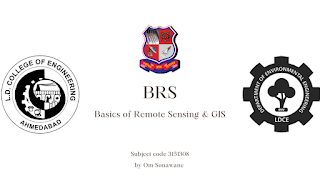There are Three Types Of Energy
- Conduction
- Convection
- Radiation
Absorption, scattering, reflection and refraction ( for phenomena for light intercept )
Absorption : there are many interaction for absorption, 1350 energy reflect and absorb in atmosphere.
UV light : stratosphere absorb UV rays. Ozone layer maximum absorb the UV rays.
Atmospheric Window : Certain contain absorb and certain content pass through the spectrometer so it's called atmospheric window.
Scattering ( Spreading )
Classification of scattering :
- Selective scattering
- Non selective scattering
In selective scattering there are three types :
- Relays scattering
- Mines scattering
- Raman scatering
#1. Selective scattering
Where particle size is 5 micrometer and the wavelength of the light is 5 m so light is not scatter.
But where the particle size 10 micrometre and wavelength of the light is 5 m so light is reflect.
1. Relays scattering ( Molecular Scattering )
Much more smaller than the light ( 550 microwavelength)
Source is very high and particle ( less than > 1 time )
Upper atmosphere ( 25 km from sky )
Atmosphere blue because of Relays scattering.
Scattering inversely proportional to wavelength of the light. ( Well 550 wavelength of the light then 60 time higher scattering happen )
2. Mie scattering ( non molecular scattering )
The particle size is very high and and it's happened below the atmosphere it's call Mie scattering.
( 0.1 to 10 Times ) particle size it will give you mie scattering.
Lower atmosphere up to 4 to 5 km.
3. Raman scatering ( particle size may Les and high doesn't matter )
Light intensity either increase so Raman scattering or may be Decrease.
#2. Non selective scattering
( light source more than 10 times larger so non selective scattering happens )
It is not in organised form
Note : Relays scattering > Raman scatering > mie scattering ( particle size always ... increase )
Refreation :
When light change their medium the light pass through one phase to another phase it's call reflection ( due to density ) Atmospheric Simring due to Refreation.
Reflection :
( The medium are same ) it will not generated data on particular surface.
4 phenomena for light interact :
Radiant flux ( Albido or Surface reflux) vot/ meter ^2
Radiant energy difference its call radiant flux.
Spectroscopy : any object how react with electromagnetic...
Spector: every object it's unique because every chemical composition are different.
Observance and Reflection both are in reversible


.jpg)

0 Comments